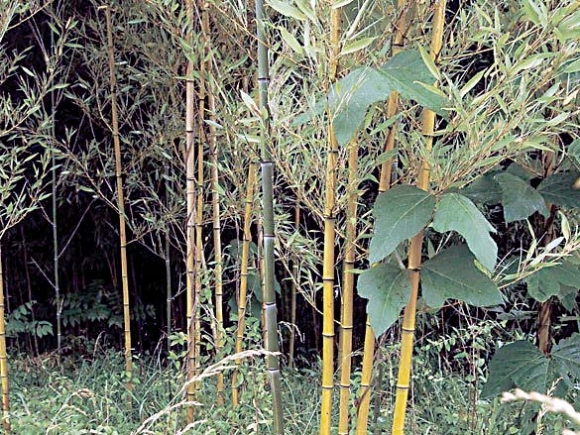The Naturalist's Corner: Bamboo by any other name

Bamboo is the common name applied to a wide and varied group of woody grasses from all around the world. There are more than 1,000 species of bamboo. Bamboo grows in temperate and tropical climates in the Americas and throughout Asia with the greatest diversity occurring in tropical areas.
There is one native bamboo in North America, rivercane (Arundinaria gigantea). Rivercane was once abundant from southern Ohio to the Gulf states. A smaller subspecies, switchcane (A. gigantea tecta), is restricted to the Atlantic and Gulf coastal regions primarily from Maryland southward.
Rivercane is a “running” bamboo and used to form extensive colonies or canebrakes. At the time of European settlement of North America, canebrakes occupied millions of acres of floodplains, coastal prairies and savannahs across the Southeast. Due to clearing for agricultural purposes and urbanization canebrakes are virtually nonexistent today and are regarded as critically endangered ecosystems. Rivercane is now generally found in riparian corridors and/or as edges between wetlands and forests.
Rivercane was and is an important natural resource for the Cherokee.
Today, its primary importance is for crafts such as traditional baskets and flutes. But before the settlers displaced the Cherokee and destroyed most of the rivercane habitat, the plant played a much more utilitarian role. The native bamboo was used for shelter building, sleeping mats, tools as well as weapons like spears, blowguns and arrows and for ceremonial pipes.
Today organizations like The Revitalization of Traditional Cherokee Artisan Resources (RTCAR), Western Carolina University, the Land Trust for the Little Tennessee (LTLT) and others with assistance from the Cherokee Preservation foundation are working with the Eastern Band of Cherokee Indians to preserve, enhance and restore rivercane across the Qualla Boundary and adjacent areas.
Related Items
The LTLT has been working with the tribe to learn more about the propagation and management of rivercane. Cane is important to the Cherokee from an environmental perspective as well as cultural. Rivercane is a great soil stabilizer and can help curb erosion and mitigate flood damage.
Some ornithologists believe that the demise of canebrakes across the Southeast is a primary factor in the loss of the Bachman’s warbler, believed by many to be extinct. Canebrakes are also thought to provide critical habitat for Swainson’s warbler as well as a half dozen species of butterflies and numerous rare plants.
One of the reasons that bamboo creates such a taxonomic nightmare is the fact that flowers — which taxonomists rely so heavily on — are hard to come by. Many species of bamboo, including rivercane are semelparous, meaning they generally flower and fruit only once then die. It can take 30 to 60 years for a plant to flower. While this is a bane to a taxonomist, it has little effect on the propagation of bamboo because it spreads by underground rhizomes.
As mentioned before, rivercane is quite rare across its former range. In natural settings it should be preserved. However, many invasive bamboos are cultivated and often escape.
Since there are so many different species of bamboo, the easiest thing is to learn to recognize native rivercane. Rivercane may grow to 20 feet tall. It is usually an inch or smaller in diameter. The leaves often lack stalks and are up to 15 inches long and 2.5 inches wide. The stalks are greenish in color. Switchcane is just a smaller version.
Almost any stand of bamboo found in natural sites — along river or stream banks or at the edge of wetlands — that fit the description above are likely rivercane.
Editor’s note: This Naturalist Corner column first appeared in The Smoky Mountain News in December 2005.
(Don Hendershot is a naturalist and a writer who lives in Haywood County. He can be reached at This email address is being protected from spambots. You need JavaScript enabled to view it.)









